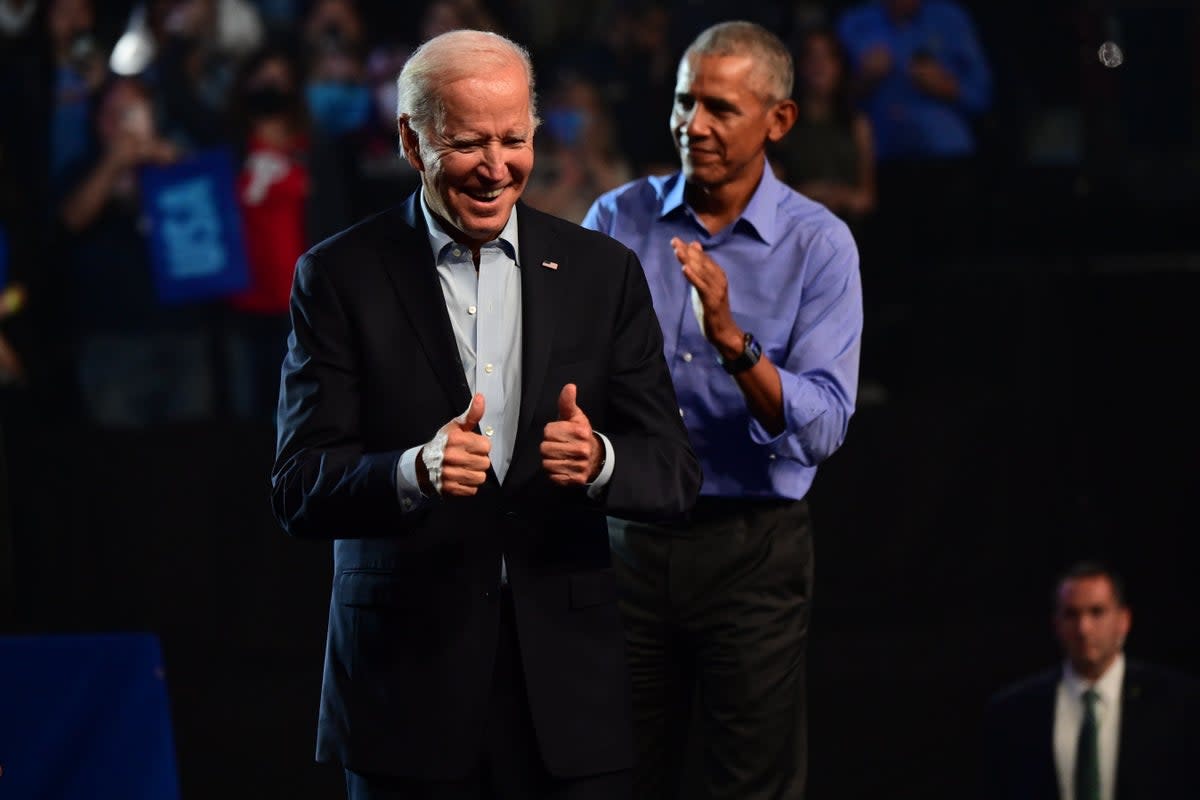Biden is playing the Obama game on immigration now

On Tuesday, President Joe Biden announced a surprising policy that would allow for spouses of Americans who migrated to the United States illegally to gain citizenship.
The announcement comes just weeks after Biden announced some of the strictest crackdowns on migration at the US-Mexico border.
That executive order would give him permission to “shut down” to border if more than 2,500 migrants cross in a single day. It also allowed the order to be suspended if crossings dropped to below 1,500 a day — an exorbitantly low number that almost guaranteed the border would remain closed indefinitely. The order also said that people who cross the border outside of ports of entry could not claim asylum “absent exceptionally compelling circumstances.”
The provisions in that order infuriated Latino Democrats and progressive activists, who said the provisions were reminiscent of the worst policies from the Trump presidency.
But Biden’s recent announcement shows that he has essentially reverted back to his former boss Barack Obama’s approach to immigration, which is to say: crack down on migrant crossings while at the same time offering relief for immigrants who are already here.
Obama’s presidency saw some of the most sweeping deportations and crackdowns at the US-Mexico border ever conducted. In fact, the Obama administration deported more migrants than Donald Trump’s administration.
The Obama White House would have argued they did this in service of showing Republicans they were serious about border security to get them to agree to immigration reform. But many immigrant advocate groups were infuriated by his conduct, which led to them dubbing him “the deporter-in-chief.”
Much in the same way, Obama enacted the Deferred Action for Childhood Arrivals in 2012, which allowed migrants who arrived as children to be protected from deportation and obtain work permits.
The move was meant to be a stop-gap measure, given that Republicans controlled the House of Representatives. When Obama had a trifecta that included 59 Democratic Senators, Republicans still filibustered the DREAM Act — which would have provided a path to citizenship for undocumented immigrants who went to college or served in the military — with the help of five Democratic Senators.
The hope was that DACA would serve as a temporary measure until enough political momentum built to pass immigration reform and long-term relief for migrants.
That proved to be enough in the 2012 presidential campaign when Obama ran against Mitt Romney. Despite his image now as a moderate statesman, Romney ran as a hawk on immigration who talked about migrants self-deporting. That sharp turn away from John McCain, an Arizona Republican who supported immigration reform, repelled Hispanic voters and helped Obama improve his numbers with the demographic in his re-election.
It was also part of a larger strategy among Democrats: As American became browner, supporting immigration reform would be their way to show their interests were in line with a swing voting demographic. And it banked on Republican rhetoric being so rabidly anti-immigrant that it would repel Latino voters away from Republicans.
Obama’s victory made Republicans somewhat open to immigration reform. But then the base revolted against an immigration bill that included a balance of increased border security and migrant relief. That in turn paved the way for Trump to win the GOP nomination against rivals including Marco Rubio, who crafted the immigration bill.
Furthermore, Trump would give Republicans an even bigger gift by improving his margins with Hispanic voters in 2020 — even despite his often xenophobic rhetoric about immigrants. That gave Republicans the impression they no longer had to alienate conservatives by supporting immigration reform in their efforts to win over Hispanic voters.
Biden’s new strategy is in the same mold as Obama’s. The order comes after Republicans rejected legislation that would have swapped a crackdown on immigration and money for a border wall for aid to Ukraine and Israel, largely because Trump opposed it.
Republicans did so to continue giving Trump an issue to campaign on, since he and the GOP have tried to hammer Biden on immigration more than any other topic. Biden’s first executive action is meant to show that he’s tough on the issue.
In the same vein, his new announcement for citizenship, rather than providing relief for most migrants, elevates some of the most sympathetic migrants. While Obama’s DACA provisions showed role model students and people willing to serve in the military, Biden elevating spouses allows him to argue he is keeping families of mixed status together.
However, the politics of immigration have changed significantly. Immigration reform enjoyed widespread support a few years ago. But a CBS News poll released this month showed that 62 per cent of Americans support a program similar to Trump’s proposal that would deport all undocumented immigrants, with a slight majority of Hispanic voters supporting it as well.
This could ultimately make it harder to pass reform that Biden seeks.


